Related Research Articles

Cryptanalysis refers to the process of analyzing information systems in order to understand hidden aspects of the systems. Cryptanalysis is used to breach cryptographic security systems and gain access to the contents of encrypted messages, even if the cryptographic key is unknown.
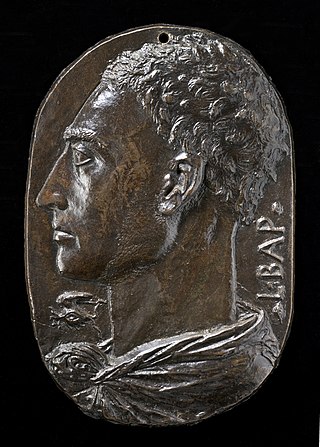
Leon Battista Alberti was an Italian Renaissance humanist author, artist, architect, poet, priest, linguist, philosopher, and cryptographer; he epitomised the nature of those identified now as polymaths. He is considered the founder of Western cryptography, a claim he shares with Johannes Trithemius.

The Voynich manuscript is an illustrated codex, hand-written in an unknown script referred to as 'Voynichese.' The vellum on which it is written has been carbon-dated to the early 15th century (1404–1438). Stylistic analysis has indicated the manuscript may have been composed in Italy during the Italian Renaissance. While the origins, authorship, and purpose of the manuscript are still debated, hypotheses range from a script for a natural language or constructed language, an unread code, cypher, or other form of cryptography, or perhaps a hoax, reference work, or work of fiction currently lacking the translation(s) and context needed to both properly entertain or eliminate any of these possibilities.

A camera obscura is a darkened room with a small hole or lens at one side through which an image is projected onto a wall or table opposite the hole. The image of lensless camera obscuras is also referred to as "pinhole image".
In cryptography, a substitution cipher is a method of encrypting in which units of plaintext are replaced with the ciphertext, in a defined manner, with the help of a key; the "units" may be single letters, pairs of letters, triplets of letters, mixtures of the above, and so forth. The receiver deciphers the text by performing the inverse substitution process to extract the original message.

Symmetric-key algorithms are algorithms for cryptography that use the same cryptographic keys for both the encryption of plaintext and the decryption of ciphertext. The keys may be identical, or there may be a simple transformation to go between the two keys. The keys, in practice, represent a shared secret between two or more parties that can be used to maintain a private information link. The requirement that both parties have access to the secret key is one of the main drawbacks of symmetric-key encryption, in comparison to public-key encryption. However, symmetric-key encryption algorithms are usually better for bulk encryption. With exception of the one-time pad they have a smaller key size, which means less storage space and faster transmission. Due to this, asymmetric-key encryption is often used to exchange the secret key for symmetric-key encryption.
The Accademia dei Lincei is one of the oldest and most prestigious European scientific institutions, located at the Palazzo Corsini on the Via della Lungara in Rome, Italy.
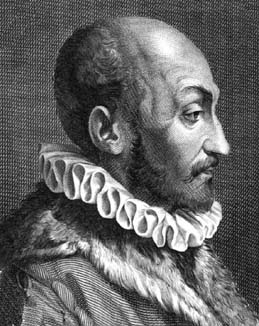
Giambattista della Porta, also known as Giovanni Battista Della Porta, was an Italian scholar, polymath and playwright who lived in Naples at the time of the Renaissance, Scientific Revolution and Counter-Reformation.
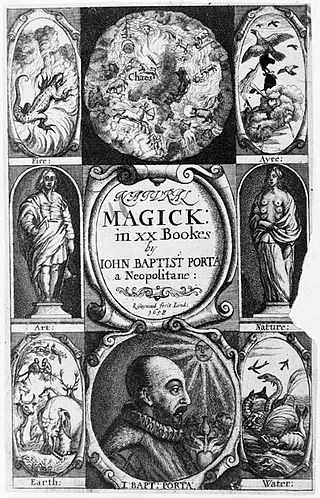
Magia Naturalis is a work of popular science by Giambattista della Porta first published in Naples in 1558. Its popularity ensured it was republished in five Latin editions within ten years, with translations into Italian (1560), French, (1565) Dutch (1566) and English (1658) printed.
Polygraphic substitution is a cipher in which a uniform substitution is performed on blocks of letters. When the length of the block is specifically known, more precise terms are used: for instance, a cipher in which pairs of letters are substituted is bigraphic.

Giambattista Marino was an Italian poet who was born in Naples. He is most famous for his epic L'Adone.

Montecalvario is a neighbourhood (quartiere) of Naples, southern Italy. The area centers roughly on the square called Piazza Carità and the metal monument to Salvo D'Acquisto at the northern end of the Quartieri Spagnoli of the city; the area stretches along the main downtown street, via Toledo, to include a number of historic buildings built under the Spanish Viceregal in the 16th century, including the building that housed the "Nunzio apostolico", the ambassador of the Holy See to Naples, and the home of Giambattista della Porta. The area is part of the Historic Centre of Naples, a UNESCO World Heritage Site.

Renaissance magic was a resurgence in Hermeticism and Neo-Platonic varieties of the magical arts which arose along with Renaissance humanism in the 15th and 16th centuries CE. During the Renaissance period, magic and occult practices underwent significant changes that reflected shifts in cultural, intellectual, and religious perspectives. C. S. Lewis, in his work on English literature, highlighted the transformation in how magic was perceived and portrayed. In medieval stories, magic had a fantastical and fairy-like quality, while in the Renaissance, it became more complex and tied to the idea of hidden knowledge that could be explored through books and rituals. This change is evident in the works of authors like Spenser, Marlowe, Chapman, and Shakespeare, who treated magic as a serious and potentially dangerous pursuit.
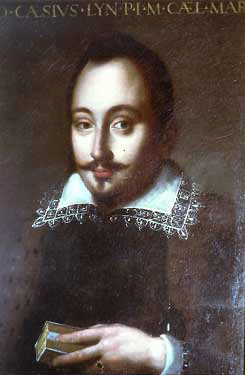
Federico Angelo Cesi was an Italian scientist, naturalist, and founder of the Accademia dei Lincei. On his father's death in 1630, he became briefly lord of Acquasparta.
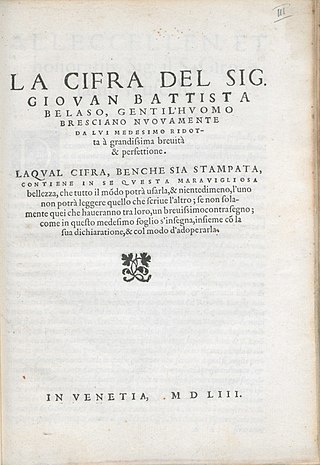
Giovan Battista Bellaso was an Italian cryptologist.
Quinzio Bongiovanni was an Italian doctor and scholar, active in the disputes between traditional scholasticism and the natural philosophy of Bernardino Telesio, Giambattista della Porta and members of the Accademia dei Lincei.

The Enlightenment in Italy was a cultural and philosophical movement that began in the second half of the eighteenth century, characterized by the discussion of the epistemological, ethical, and political issues of the Enlightenment thought of the eighteenth century.

The Accademia degli Oziosi was the most famous Neapolitan literary academies of the Renaissance.
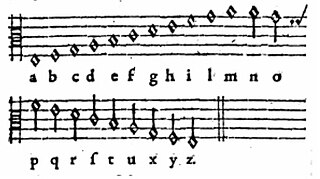
In cryptography, a music cipher is an algorithm for the encryption of a plaintext into musical symbols or sounds. Music-based ciphers are related to, but not the same as musical cryptograms. The latter were systems used by composers to create musical themes or motifs to represent names based on similarities between letters of the alphabet and musical note names, such as the BACH motif. Whereas music ciphers were systems typically used by cryptographers to hide or encode messages for reasons of secrecy or espionage.
References
- ↑ "Keeping secrets in sixteenth-century Istanbul". OUPblog. 22 August 2017. Retrieved 23 September 2020.
- ↑ "On Secret Writing". University of Oklahoma. 23 June 2015. Retrieved 23 September 2020.
- ↑ ""The Author And His Work" Giambattista della Porta (JOHN BAPTIST PORTA)". University of Massachusetts Boston. Retrieved 23 September 2020.
- ↑ "Giovanni della Porta, el sabio renacentista que encriptaba mensajes dentro de huevos para eludir el control de la Inquisición". La Brújula Verde (in Spanish). 1 March 2019. Retrieved 23 September 2020.